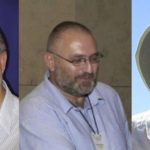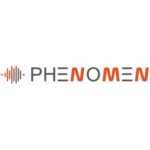Tokyo – Oct. 12, 2023 – NTT Corporation (NTT) said it successfully demonstrated technology that expands transmission capacity while reducing energy use by 67 percent in optical communications platforms; specifically, the C band (near the wavelength of 1550 nm—a major communication wavelength band). To demonstrate this expansion in capacity reduction in power consumption, NTT utilized multi-core […]
NTT Reports Increase in Optical Transmission Capacity, Reduced Power Consumption
NTT, MIT and Other Researchers Demonstrate Optically Accelerated Edge Computing
Sunnyvale, Calif. – May 9, 2023 – Researchers from NTT Research, Inc., the Massachusetts Institute of Technology (MIT) and several optical computing companies have demonstrated an approach to optically driven deep neural networks (DNN) that they say resolves the memory-access bottleneck in resource-constrained edge devices, enabling significant energy usage and latency reductions. Conceived by NTT […]
HPC Veteran Charlie Wuischpard Joins Optical Startup Ayar Labs
Today Ayar Labs announced that Charlie Wuischpard, former vice president and general manager at Intel, has joined Ayar Labs as CEO and a member of the board of directors. “With his track record of driving growth in both small and large companies, forming deep trusted relationships with high performance computing industry participants, and delivering value to stakeholders, we know he will lead Ayar Labs to growth in the advanced computing and data center markets.”
Dr Keren Bergman previews ISC Keynote on Optical Computing for HPC
In this special guest feature from Scientific Computing World, Dr Keren Bergman, Professor of Electrical Engineering at the School of Engineering and Applied Science, Columbia University discusses her keynote on the development of silicon photonics for HPC ahead of her Tuesday keynote presentation at ISC 2018. “So today we are able to make all the components of photonic links and this includes 50 GHz data modulators, 50 GHz receivers, nanosecond scale switches all kinds of structures and we can do wave division multiplexing into these interconnect structures. The capabilities are just enormous.”
Optalysys Appoints Scientific Advisory Board for Optical Computing
Today Optalysys announced the formation of its first Scientific Advisory Board (SAB) comprising experts in AI/machine learning, bioinformatics/genomics and optical pattern recognition. The inaugural SAB members include Professor Douglas Kell of The University of Manchester, Professor Timothy Wilkinson of University of Cambridge and ex-senior NASA scientist, Dr. Richard Juday. “Collectively, these experts have deep knowledge in areas most critical to our long-term success,” said Dr. Nick New, founder and director, Optalysys. “We’re excited to work closely with them through the process of bringing to market our unique optical approach to super-fast, low-power computing to enable more tech innovators and scientists to create a better world.”
European PHENOMEN Project to Develop First Optically-driven Phonon Sources and Detectors
The Polytechnic University of Valencia (UPV) is taking part in the European PHENOMEN project, which kicked off last September. Funded through the FET-Open program, it aims to lay the foundations of a new information technology. “PHENOMEN is a ground-breaking project that will combine advances in photonics, mechanics and electronics to develop the first optically-driven phonon sources and detectors, all at the nano scale.”








